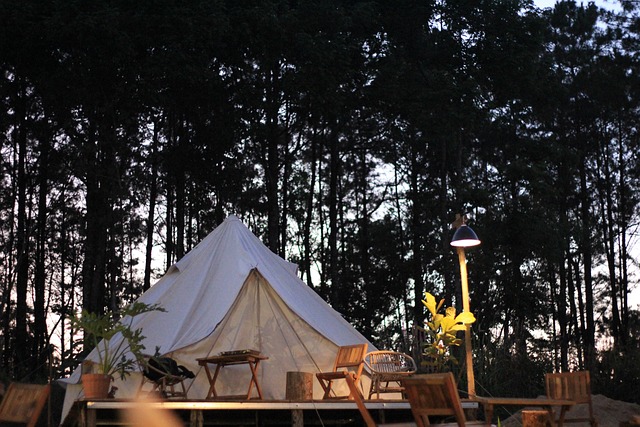Glamping, a fusion of “glamorous” and “camping,” has become an increasingly popular way to experience the great outdoors while still enjoying the comforts of modern life. Glamping provides an opportunity to connect with nature without sacrificing comfort, making it an attractive option for many travelers. However, with any type of outdoor activity, safety should always be a top priority. In this article, I’ll explore the question of whether glamping is safe and provide insights into the risks, precautions, and benefits of glamping.
What is Glamping?
Glamping is a form of camping that offers luxurious accommodations and amenities to guests. The term “glamping” originated from the combination of “glamorous” and “camping” and is a popular trend for people who want to experience nature without sacrificing comfort. Unlike traditional camping, glamping offers amenities such as comfortable beds, indoor heating and cooling, private bathrooms, and electricity, among others.
Glamping accommodations can vary from luxury tents to yurts, treehouses, cabins, and even eco-friendly domes. The goal of glamping is to provide a unique outdoor experience while still enjoying modern amenities. The concept of glamping has been around for centuries, but it has become increasingly popular in recent years due to the demand for eco-friendly and sustainable travel.
Is Glamping Safe?
When it comes to glamping, safety concerns can arise just as with any other outdoor activity. However, with proper precautions and planning, glamping can be a safe and enjoyable experience. It’s important to understand the potential risks associated with glamping and take steps to minimize them.
Risks associated with glamping
- Environmental Risks: Glamping typically involves being in a natural environment, which means that you may be exposed to wildlife, insects, weather, and other natural hazards. This can include encounters with bears, snakes, and other dangerous animals. Additionally, severe weather such as thunderstorms, floods, or wildfires can pose a risk to campers.
- Health and Safety Risks: Glamping also poses certain health and safety risks that are common to camping. These can include food poisoning, dehydration, sunburn, and injuries caused by uneven terrain, campfires, or other hazards.
Precautions and Safety Measures
- Choosing a safe location: When choosing a glamping location, it’s important to research the area and check for any known safety risks. This can include checking for potential wildlife hazards, weather patterns, and other environmental factors. You can also consult with local park rangers or glamping providers for information on safety and security measures.
- Checking for certifications and permits: It’s also important to choose a glamping provider that is licensed and certified to operate in the area. This ensures that they have met safety standards and regulations set by the authorities.
- Preparing for emergencies: Before embarking on a glamping trip, it’s essential to have a plan for emergencies. This includes having a first aid kit, a means of communication, and knowledge of the nearest medical facilities and emergency services.
- Following the rules and regulations: Lastly, it’s important to follow the rules and regulations set by the glamping provider and the authorities. These may include restrictions on campfires, noise levels, and other activities that can impact the environment and other guests.
Benefits of Glamping
Glamping offers a range of benefits that make it an attractive option for travelers seeking a unique and comfortable outdoor experience. Here are some of the key benefits of glamping:
- Health Benefits: Glamping can provide several health benefits. Spending time in nature has been shown to reduce stress and improve mental health. Additionally, glamping can promote physical activity through activities like hiking, fishing, or kayaking.
- Environmental Benefits: Glamping is often designed to minimize its impact on the environment. Many glamping providers use sustainable practices like using solar power, recycling, and reducing waste. By choosing glamping, travelers can reduce their carbon footprint and support eco-friendly travel.
- Economic Benefits: Glamping can also provide economic benefits to the local community. Many glamping sites are located in rural areas, providing jobs and supporting local businesses. By choosing to glamp, travelers can support the local economy and promote sustainable tourism.
Overall, glamping offers a range of benefits that make it an appealing option for travelers who want to experience the outdoors without sacrificing comfort. From promoting health and wellness to supporting eco-friendly and sustainable travel, glamping can be a rewarding and enriching experience.
Conclusion
In conclusion, glamping can be a safe and enjoyable way to experience nature while still enjoying modern comforts. However, as with any outdoor activity, it’s important to take precautions to minimize risks and ensure safety. By choosing a safe location, checking for certifications and permits, preparing for emergencies, and following the rules and regulations, glamping can be a safe and enriching experience.
Moreover, glamping offers several benefits such as promoting health and wellness, supporting eco-friendly and sustainable travel, and providing economic benefits to the local community. Glamping can be a unique and rewarding way to connect with nature and enjoy the great outdoors in comfort and style.




